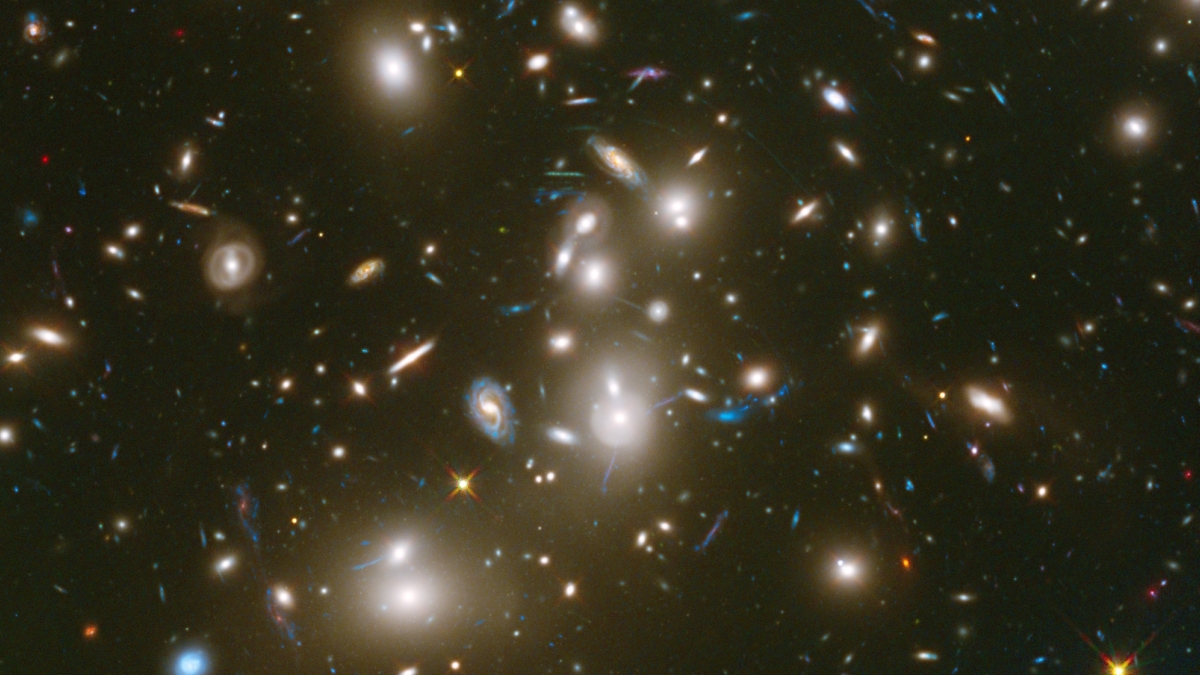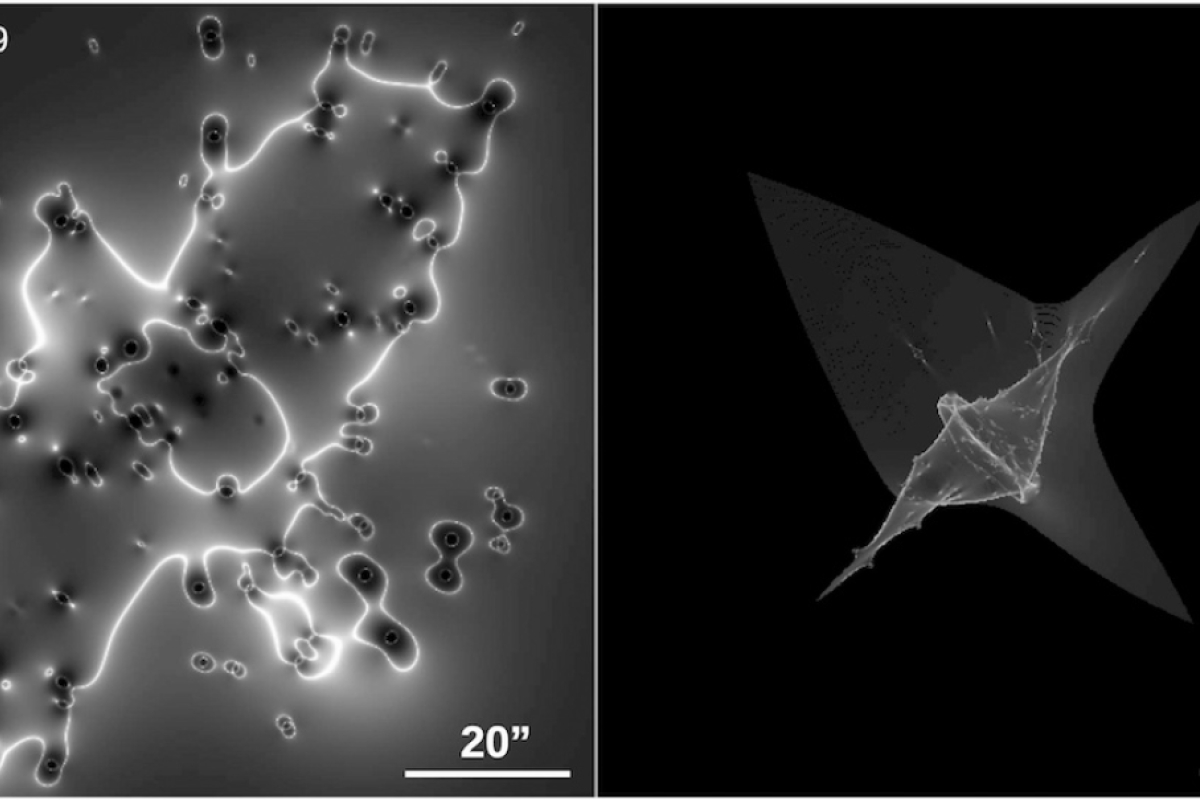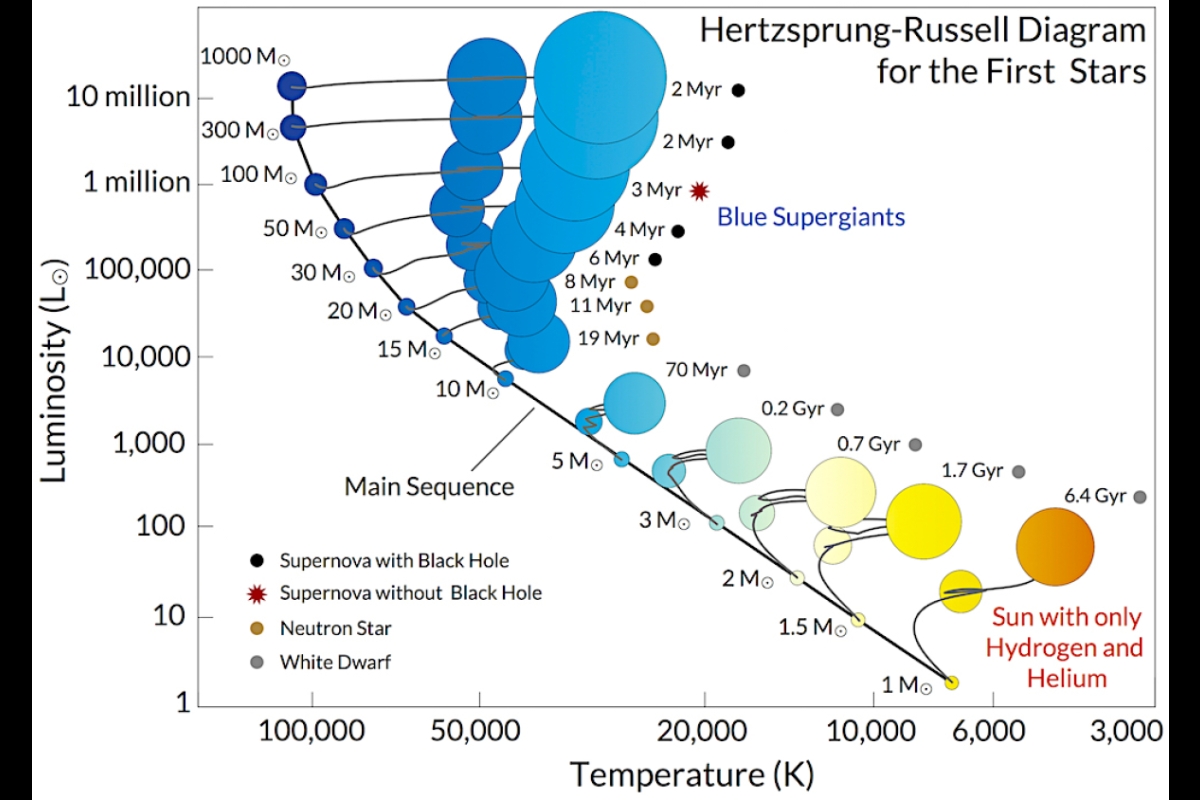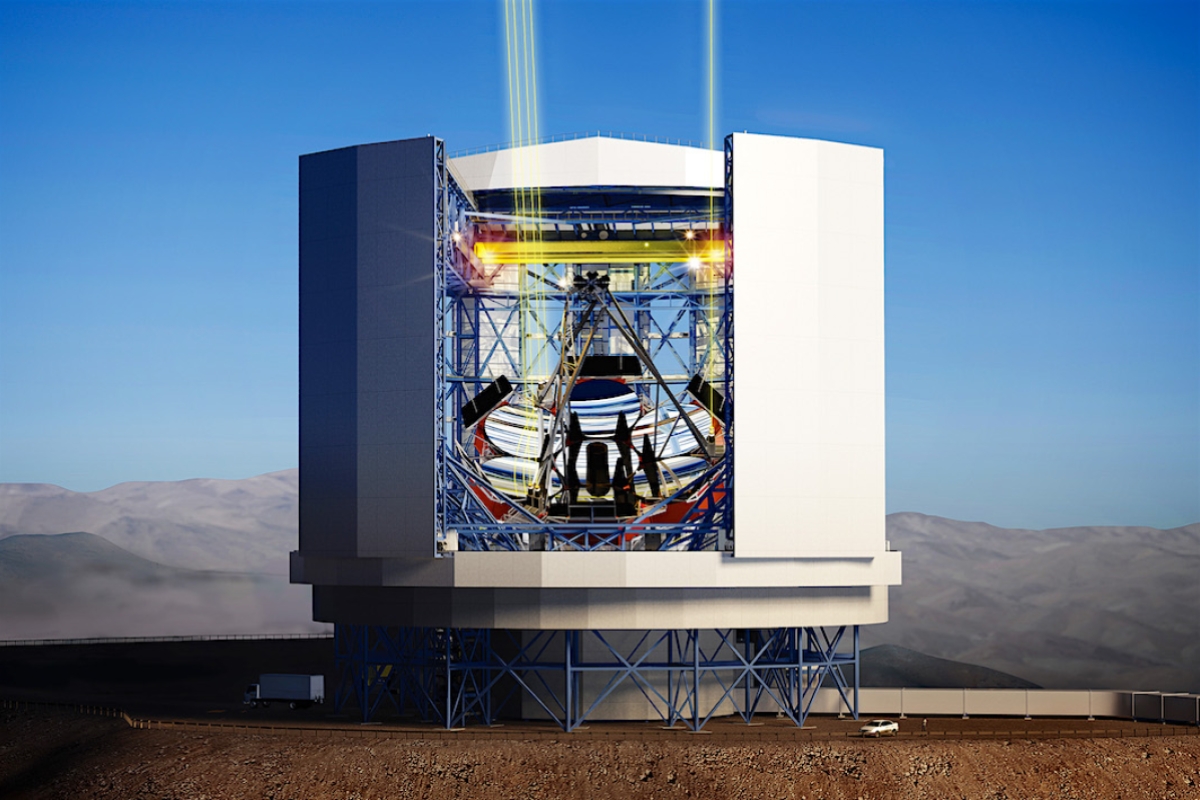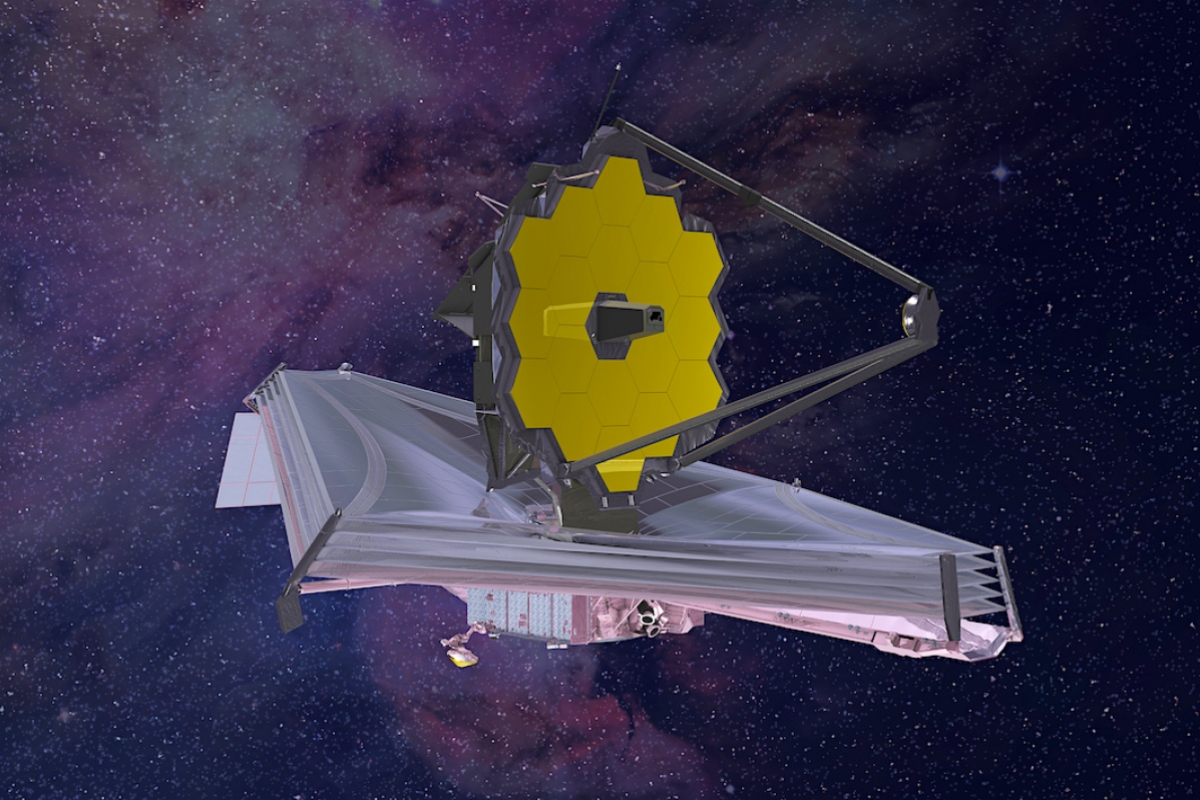About 200 to 400 million years after the Big Bang created the universe, the first stars began to appear. Ordinarily stars lying at such a great distance in space and time would be out of reach even for NASA's new James Webb Space Telescope, due for launch in 2020.
However, astronomers at Arizona State University are leading a team of scientists who propose that with good timing and some luck, the Webb Space Telescope will be able to capture light from the first stars to be born in the universe.
"Looking for the first stars has long been a goal of astronomy," said Rogier Windhorst, Regents' Professor of astrophysics in ASU's School of Earth and Space Exploration. "They will tell us about the actual properties of the very early universe, things we’ve only modeled on our computers until now."
Windhorst's collaborator, Frank Timmes, professor of astrophysics at the School of Earth and Space Exploration, adds, "We want to answer questions about the early universe such as, were binary stars common or were most stars single? How many heavy chemical elements were produced, cooked up by the very first stars, and how did those first stars actually form?
Duho Kim, a School of Earth and Space Exploration graduate student of Windhorst's, worked on modeling star populations and dust in galaxies.
The other collaborators on the paper are J. Stuart B. Wyithe (University of Melbourne, Australia), Mehmet Alpaslan (New York University), Stephen K. Andrews (University of Western Australia), Daniel Coe (Space Telescope Science Institute), Jose M. Diego (Instituto de Fisica de Cantabria, Spain), Mark Dijkstra (University of Oslo), and Simon P. Driver and Patrick L. Kelly (both University of California, Berkeley).
The team's paper, published in the Astrophysical Journal Supplement, describes how the challenging observations can be done.
Gravity's magnifying lens
The first essential step in the task relies on the infrared sensitivity of the Webb telescope. While the first stars were large, hot and radiated far-ultraviolet light, they lie so far away that the expansion of the universe has shifted their radiation peak from the ultraviolet to much longer infrared wavelengths. Thus their starlight drops into the Webb telescope's infrared detectors like a baseball landing in a fielder's mitt.
The second essential step is to use the combined gravity of an intervening cluster of galaxies as a lens to focus and magnify the light of the first generation stars. Typical gravitational lensing can magnify light 10 to 20 times, but that's not enough to make a first-generation star visible to the Webb telescope. For Webb, the candidate star's light needs boosting by factor of 10,000 or more.
To gain that much magnification calls for "caustic transits," special alignments where a star's light is greatly magnified for a few weeks as the galaxy cluster drifts across the sky between Earth and the star.
Caustic transits occur because a cluster of galaxies acting as a lens doesn't produce a single image like a reading magnifier. The effect is more like looking through a lumpy sheet of glass, with null zones and hot spots. A caustic is where magnification is greatest, and because the galaxies in the lensing cluster spread out within it, they produce multiple magnifying caustics that trace a pattern in space like a spider web.
Playing the odds
How likely is such an alignment? Small but not zero, say the astronomers, and they note the spider web of caustics helps by spreading a net. Moreover each caustic is asymmetrical, producing a sharp rise to full magnification if a star approaches from one side, but a much slower rise if it approaches from the other side.
"Depending on which side of the caustic it approaches from, a first star would brighten over hours — or several months," Windhorst explained. "Then after reaching a peak brightness for several weeks, it would fade out again, either slowly or quickly, as it moves away from the caustic line."
A key attribute of the first stars is that they formed out of the early universe's mix of hydrogen and helium with no heavier chemical elements such as carbon, oxygen, iron, or gold. Blazingly hot and brilliantly blue-white, the first stars display a textbook simple spectrum like a fingerprint, as calculated by the ASU team using the open software instrument Modules for Experiments in Stellar Astrophysics.
Another object potentially visible by the same magnifying effect is an accretion disk around the first black holes to form after the Big Bang. Black holes would be the final evolutionary outcome of the most massive first stars. And if any such stars were in a two-star (binary) system, the more massive star, after collapsing to a black hole, would steal gas from its companion to form a flat disk feeding into the black hole.
An accretion disk would display a different spectrum from a first star as it transits a caustic, producing enhanced brightness at shorter wavelengths from the hot, innermost part of the disk compared to the colder outer zones of it. The rise and decay in brightness would also take longer, though this effect would likely be harder to detect.
Accretion disks are expected to be more numerous because solitary first stars, being massive and hot, race through their lives in just a few million years before exploding as supernovas. However, theory suggests that an accretion disk in a black hole system could shine at least ten times longer than a solitary first star. All else being equal, this would increase the odds of detecting accretion disks.
It's educated guesswork at this stage, but the team calculates that an observing program which targets several galaxy clusters a couple of times a year for the lifetime of the Webb Telescope could find a lensed first star or black hole accretion disk. The researchers have selected some target clusters, including the Hubble Frontier Fields clusters and the cluster known as "El Gordo."
"We just have to get lucky and observe these clusters long enough," Windhorst said. "The astronomical community would need to continue to monitor these clusters during Webb’s lifetime."
On beyond Webb
Which raises a point. While the Webb Space Telescope will be a technical marvel, it will not have a long operational lifetime like the Hubble Space Telescope. Launched in 1990, the Hubble telescope is in low Earth orbit and has been serviced by astronauts five times.
The Webb Space Telescope, however, will be placed at a gravitationally stable point in interplanetary space, 1.5 million kilometers (930,000 miles) from Earth. It has been designed to operate for 5 to 10 years, which might with care stretch to about 15 years. But there's no provision for servicing by astronauts.
Accordingly, Windhorst notes that ASU has joined the Giant Magellan Telescope (GMT) Organization. This is a consortium of universities and research institutions that will build its namesake telescope on a high and dry mountaintop at Las Campanas Observatory in Chile. The site is ideal for infrared observing.
Upon completion in 2026, the GMT will have a light-collecting surface 24.5 meters (80 feet) in diameter, built from seven individual mirrors. (The Webb Space Telescope's main mirror has 18 sections and a total diameter of 6.5 meters, or 21 feet.) The GMT mirrors are expected to achieve a resolving power 10 times greater than that of the Hubble Space Telescope in the infrared region of the spectrum.
There will be a period during which the Webb telescope and the Giant Magellan Telescope will both be in operation.
"We're planning to make observations of first-generation stars and other objects with the two instruments," Windhorst said. "This will let us cross-calibrate the results from both."
The overlap between the two telescopes is important in another way, he said.
"The GMT's operational lifetime will continue for many decades into the future. This is unlike the Webb telescope, which will eventually run out of thruster fuel to maintain its orbit in space."
When that happens, contact with the Webb telescope will be lost and its mission will come to an end.
Said Windhorst, "One way or another, we are confident we can detect the first stars in the universe."
A version of this story appears at http://webbtelescope.org/articles/2018-23.
Top image: The galaxy cluster Abell 2744 lies at a distance of about 3.5 billion light-years and contains more than 400 member galaxies. The combined gravity of all the galaxies makes the cluster act as a lens to magnify the light from stars beyond including, the team hopes, the first stars to form in the universe. Credit: NASA/ESA/Arizona State University (R. Windhorst and F. Timmes)
More Science and technology

ASU-led space telescope is ready to fly
The Star Planet Activity Research CubeSat, or SPARCS, a small space telescope that will monitor the flares and sunspot activity of low-mass stars, has now passed its pre-shipment review by NASA.…

ASU at the heart of the state's revitalized microelectronics industry
A stronger local economy, more reliable technology, and a future where our computers and devices do the impossible: that’s the transformation ASU is driving through its microelectronics research…

Breakthrough copper alloy achieves unprecedented high-temperature performance
A team of researchers from Arizona State University, the U.S. Army Research Laboratory, Lehigh University and Louisiana State University has developed a groundbreaking high-temperature copper alloy…


